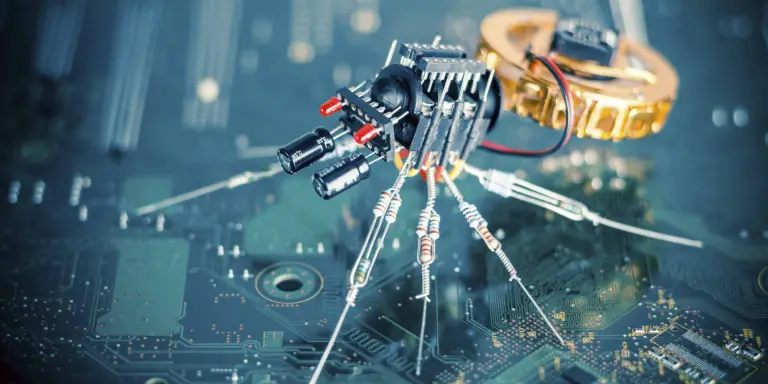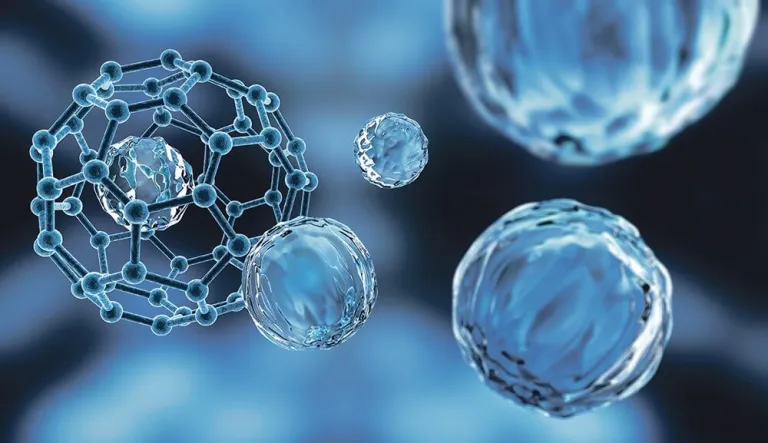What Is Nanotechnology use for?
Nanotechnology
Nanotechnology manages understanding and control of material at a scale somewhere in the range of 100 and 1 nanometers which is where the remarkable idea of peculiarities can prompt new applications.
Nanotechnology, specifically, is the most common way of imaging, displaying and estimating of advancement, portrayal, creation and utilization of gadgets, designs and frameworks through controlled modification of shape and size in the micrometer range (nuclear or sub-atomic scale) as well as macromolecular scale) which brings about gadgets, designs and frameworks that have something like one unmistakable or prevalent quality or trademark.
The Nanoscale – How Small Is Nano?
Dimensions ranging from 1 to 100 nanometers are referred to as the nanoscale.
To figure out where Nano can be set all things considered, a glance at our measurement prefix table , which incorporates delineations and an intuitive aide Investigate your Smooth Way at 10 million light years from Earth. From that point onward, you’ll go through space towards the Earth with progressive significant degrees until you show up at the level of an oak tree.
In the subsequent stage, you will move from the components of a leaf to the minute universe of the leaf’s cell walls, the cell core, chromatin and DNA, and afterward into the subatomic universe of protons and electrons.
nanotechnology, nanotechnologies, nanotech, what is nanotechnology, nanos, definition of nanotechnology, medical nanotechnology, nanotechnology in medicine, nanotechnology medicine, example of nanotechnology, nanotechnology engineer.
Defining Nanotechnology (nan’otechnol’o*gy) – It’s Not That Simple…
One of the issues that this technology faces is the uncertainty about the proper definition of nanotechnology. It is mostly concerned with the research and control of processes and materials with lengths less than 100 nanometers. Often they draw comparisons with hairs on human beings, which ranges from 50 000 to 100 000 nanometers wide.
For example in the zero-dimensional (0D) nanomaterials, all dimensions are measured in the scale of nanometers (no dimensions are greater than 100 nanometers) and in 2-dimensional nanomaterials (2D) the two dimensions are not within the nanoscale and 3D nanomaterials (3D) are substances which are not restricted to the nanoscale at any point. These classes can include bulk powders, dispersions , nanoparticles, nanowire bundles and nanotubes, and multi-nanolayers. Go through our frequently asked questions to find out more information.
A few definitions allude to sub-atomic nanotechnology “idealists” contend that any definition ought to incorporate a component of “useful frameworks”. The presentation release of Nature Nanotechnology asked 13 researchers from different fields to characterize what nanotechnology connotes to them. the responses, going from positive to distrustful, show alternate points of view.
One more key component in the definition is that the nanostructure be made by people, for example a misleadingly created nanoparticle or nanomaterial. All in all, you’d need to incorporate each normally happening biomolecule or material molecule, which would successfully rethink a ton of sub-atomic science and science as nanotechnology.
Who Coined the Term Nanotechnology?
The term was invented around 1974 by Norio Taniguichi from Tokyo Science University to describe processes in semiconductors like thin-film deposition which deal with controlling the scale of nanometers.
The definition he instituted is as yet the principal proclamation of today: ” Nano-innovation chiefly comprises of the handling of detachment, combination, and misshapening of materials by one particle or one atom.”
Many accept that the account of nanotechnology started with Richard Feynman’s scandalous talk in December 1959. It’s everything that matters Space at the Last: A Challenge to Join into another Field of Material science:
The Significance of the Nanoscale – Why Does Nanotechnology Matter
Unique physical, chemical, and biological properties may be observed in nanoscale materials. They may be different in significant ways from the nature of bulk substances as well as individual molecules or atoms.
The main properties of the materials shift dramatically with Nano components. Composites made of Nano-sized ceramics or metals with a smaller size than 100 nanometers may suddenly be much more powerful than what is predicted by current models of materials science.
For example, metals that have the size of 10 nanometers or less can be multiple times more grounded and more tough than normal partners with grain sizes of thousands of nanometers. The explanations behind these sensational alterations are established in the unusual quantum actual physical science. The principal properties of any substance are only the amount of all quantum powers that influence all particles. Whenever you diminish the size of things and more modest, you will ultimately show up at a point that the averaging system fails to work.
The properties of material properties can differ on the nanoscale, and this is due to two reasons.

What Is Nanotechnology use for?
Surface Area
In the first place, nanomaterials possess an incredibly larger surface area when compared with the same quantity of material in a more substantial form. This makes them much more reactive (in certain cases, substances that have no chemical reaction in their original form react when created by nanotechnology) as well as affect their electrical or strength.
Quantum Size Effects
The second is that quantum impacts might begin to impact the way of behaving of materials at the nanoscale – particularly at the lower end which can influence the electrical, optical and attractive qualities of the materials. This is the consequence of the electron properties in solids, with critical decreases in the size of molecule. The impact doesn’t seem while moving from miniature to full scale aspects. It turns out to be more noticeable at the point that the nanometer size range is accomplished.
We talk about surface region and the quantum impacts of size top to bottom in our clarification on the reasons the motivations behind why nanotechnology is one of a kind.
The interest with nanotechnology comes from the exceptional quantum and surfaces that matter presentations on a nanoscale. They upgrade existing modern cycles, material and applications across different regions – while additionally permitting totally new applications.
nanotechnology in engineering, engineering in nanotechnology, use of nanotechnology, nanoscience journals, nanotechnology careers, nanotechnology career,
Novel Nanotechnology Materials and Applications
There are numerous ways of controlling matter on the nanoscale. The two ideas that you are probably going to find out about commonly are base up or base up procedures. Basically, you make a nanomaterial by utilizing the block of material, and eliminating the endlessly pieces what you don’t wish to eliminate until you accomplish the structure and size you’d like (that’s hierarchical) or by utilizing oneself getting sorted out capacities of nature (that is known as self-gathering) to build things from the base up (we depict this in more noteworthy profundity in our article in regards to nanomanufacturing). The fundamental motivation to involve self-gathering for an endlessly controlled assembling process is in the plan of the parts expected to self-collect into the ideal examples and carry out the ideal roles.

Concerning the nanoscale idea of materials, there’s loads of conceivable outcomes to examine here: nanoparticles, quantum spots nanofibers and nanowires MXenes.
One model that shows how a material that is old is given another rent of life by utilizing nanoscale innovation is carbon, the component that makes up.
Regular carbon is accessible in two particular structures and is known to every one of the two kinds: precious stone and graphite. Three different structures found between the years 1985 and 2004 have prompted the ongoing excitement among researchers in regards to carbon nanomaterials: fullerenes, carbon nanotubes and , specifically, graphene. much of the time alluded to as a ‘wonder material’.
Nanomaterials are as of now being utilized in very dainty coatings that are utilized for example, in gadgets as well as effectively communicating surfaces (like windows that self-clean). In most of utilizations, the nanomaterial is implanted or fixed, however at times, similar to those in beauty care products and in certain applications for ecological remediation there are free nanoparticles utilized. The capacity to design materials with very high accuracy and accuracy (more modest than 100nm) can bring critical benefits across a wide scope of businesses like the assembling of parts for Data and Correspondence Innovation, aviation and car enterprises.
MEMS can be portrayed as a wide range of mix between mechanical (switches and springs, films, etc.) and electrical (resistors capacitors, inductors, capacitors, and so on) parts to work as actuators or sensors. The size of cell phones today is beyond the realm of possibilities without the guide of various MEMS gadgets. Aside from accelerometers and Gyrators cell phones additionally have miniature mirrors, pictures sensors, actuators that self-adjust magnetometers, pressure sensors closeness sensors, receivers and various different sensors. An alternate illustration of this remembers the use of MEMS as accelerometers for current airbags. They recognize the speed of deceleration, and, assuming the power is more prominent than the predefined limit, trigger an airbag’s expansion.
Then, at that point, specialists made a further stride down the size scale and have started investigating one more degree of scaling down – nanoelectromechanical frameworks (NEMS). NEMS are showing gigantic potential as profoundly touchy sensors of removal, mass energy, and charge.

nanotechnology, nanotechnologies, nanotech, what is nanotechnology, nanos, definition of nanotechnology, medical nanotechnology, nanotechnology in medicine, nanotechnology medicine, example of nanotechnology, nanotechnology engineer, nanotechnology in engineering, engineering in nanotechnology, use of nanotechnology, nanoscience journals, nanotechnology careers, nanotechnology career,\
Nanoscience And Nanotechnologies Are Not New
From a specific perspective nanoscience and nanotechnology aren’t new. Physicists have made polymers that are tremendous particles made out of nanoscale parts, for quite a while, and nanotechnologies have been used to make the small components on PCs throughout recent years.
Notwithstanding, progressions in apparatuses that empower individual particles and molecules to be inspected and dissected with extraordinary accuracy have empowered the turn of events and development of nanoscience and nanotechnology. With the coming of new apparatuses, came new ideas that were essentially unique and obviously the principles of mechanics that apply to the nanoworld are not quite the same as our ordinary, macroworld-based insight.
Especially, the continuous hunt to lessen the size of things has prompted devices like the AFM (AFM) (read the inside and out clarification of the essentials of what AFMs are and the way that they fill in) as well as the checking burrowing magnifying lens (STM). When joined with complex procedures like electron pillar lithography (EBL), these devices license the exact control and formation of nanostructures (see our blog entry about the way that rapid AFM permits nanofabrication continuously). Something was incomprehensible previously.
There are at present different instruments that can concentrate on the Nano mechanics of cell and biomolecular communications. Notwithstanding cantilever-based apparatuses like the AFM and others, a few models incorporate optical tweezers as well as attractive pullers.
What Does Nano Tech Do?
Nanotech works on the effectiveness of existing assembling cycles, materials, and applications by making them more modest and more conservative to the nanoscale to amplify the extraordinary quantum and surface impacts that matter showcases at the nanoscale. This is driven by organizations’ steady work to work on their current items by creating more modest parts as well as better performing materials at a lower cost.
This field of designing covers all angles associated with the plan as well as the development and activity of machines, motors and Nano-scale structures is known as nanoengineering (intimately with the terms Nanofabrication as well as nanomanufacturing). The key idea of nanotechnology designing is worried about nanoscale materials and their cooperations to create valuable designs, materials, and gadgets. This incorporates Nano organizing, the nanopatterning system, and 3D printing (we talk about nanoengineering in exhaustive profundity here).
One of the most outstanding instances of nanotechnology is an industry where nanoscale creation procedures are used at an enormous scope across the whole semiconductor industry, where the gadget’s plans have arrived at the single nanometer size. Your smartwatch, cell phone or tablet are containing a great many semiconductors on an electronic chip that is pretty much as large as the size of a finger nail.

nanotechnology, nanotechnologies, nanotech, what is nanotechnology,
What might nanotechnology at any point achieve? There’s practically no region where nanotechnology hasn’t been used somehow or another or structure, for example, surfaces, sensors, electrochemical parts, films and so on. In the field of clinical as well as natural water treatment, nanoelectronics, food and farming beauty care products, energy, batteries, aviation and space car ventures shows sporting gear, and other.
In the event that you decide “Prologue to Nanotechnology” from the menu bar on the right, you’ll find lots of articles covering these subjects in the section to one side.
Various items are characterized by the expression “nanotechnology item” since they contain nanoparticles in a structure or another. For instance a few antimicrobial coatings have silver in nanoscale structures; beauty care products and food things have nanoparticles, and certain items are produced using composite materials that contain nanomaterials (for example carbon nanotubes or filaments) to assist with reinforcing the material.
High level areas of nanotechnology center around Nanobiotechnology (the use of nanotechnologies to biomedical fields) and nanorobotics, and not be misconstrued with fictitious nanorobots from sci-fi.
Finally, A Word Of Caution
Really groundbreaking nanotech products as well as applications and materials, like nanorobotics are still years off (some claim only one or two years, others suggest that it will take many decades). What is “nanotechnology” today is basic research and development taking place in labs all over the world.
“Nanotech” items that are right now accessible are generally worked on over the long haul (utilizing developmental nanotechnology) that utilization a Nano-empowered materials, (for example, carbon nanotubes graphene, nanocomposite structure or nanoparticles of a specific substance) or a nanotech interaction (for example quantum dabs or nanopatterning for the clinical picture) is used for assembling.
There are likewise a heap of wellbeing, ecological, and security gives that come to nanotechnology as well as nanomaterials. For instance what happens when nanomaterials get into your body or into the climate? These issues are talked about exhaustively in this article.

nanotechnology, nanotechnologies, nanotech, what is nanotechnology, nanos, definition of nanotechnology, medical nanotechnology, nanotechnology in medicine, nanotechnology medicine, example of nanotechnology, nanotechnology engineer, nanotechnology in engineering, engineering in nanotechnology, use of nanotechnology, nanoscience journals, nanotechnology careers, nanotechnology career,
career in nanotechnology, careers in nanotechnology, articles on nanotechnology, nanotechnology engineering jobs, nanotechnology engineer jobs, nanotechnology in food industry, nanotechnology uses in engineering, application of nanotechnology.
nanotechnology,what is nanotechnology,nanotechnology explained,what is nanotechnology used for,nanotechnology in medicine,nanotechnology news,nanotechnology in humans,nanotechnology risks,benefit of nanotechnology,nanotechnology engineering,nanotechnology: a new frontier,nanotechnology risk,nanotechnology 2021,nanotechnology wired,nanotechnology field,nanotechnology career,nanotechnology course,nanotehnology,nanotechnology 5 levels
cheapest car insurance, comprehensive car insurance, best car insurance for you, vehicle insurance, policybazaar car insurance, third party insurance, car insurance price, car insurance scams, car insurance rates.











